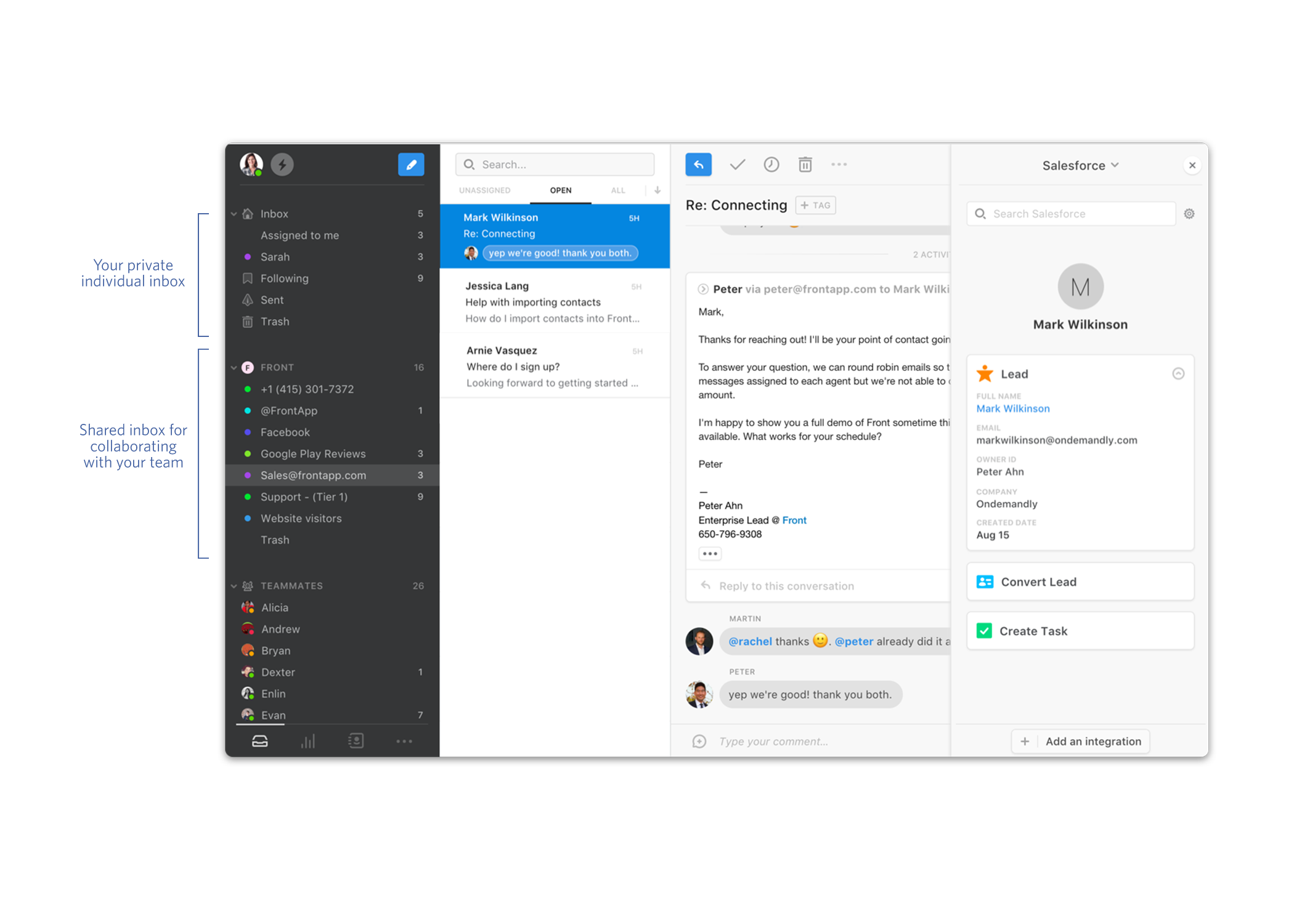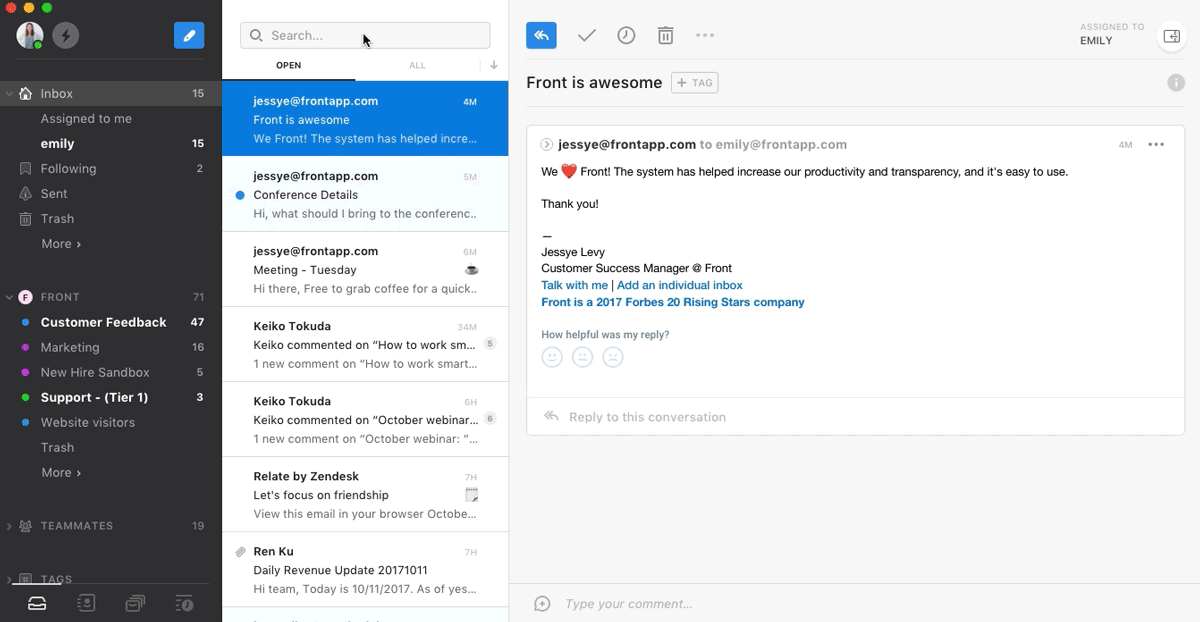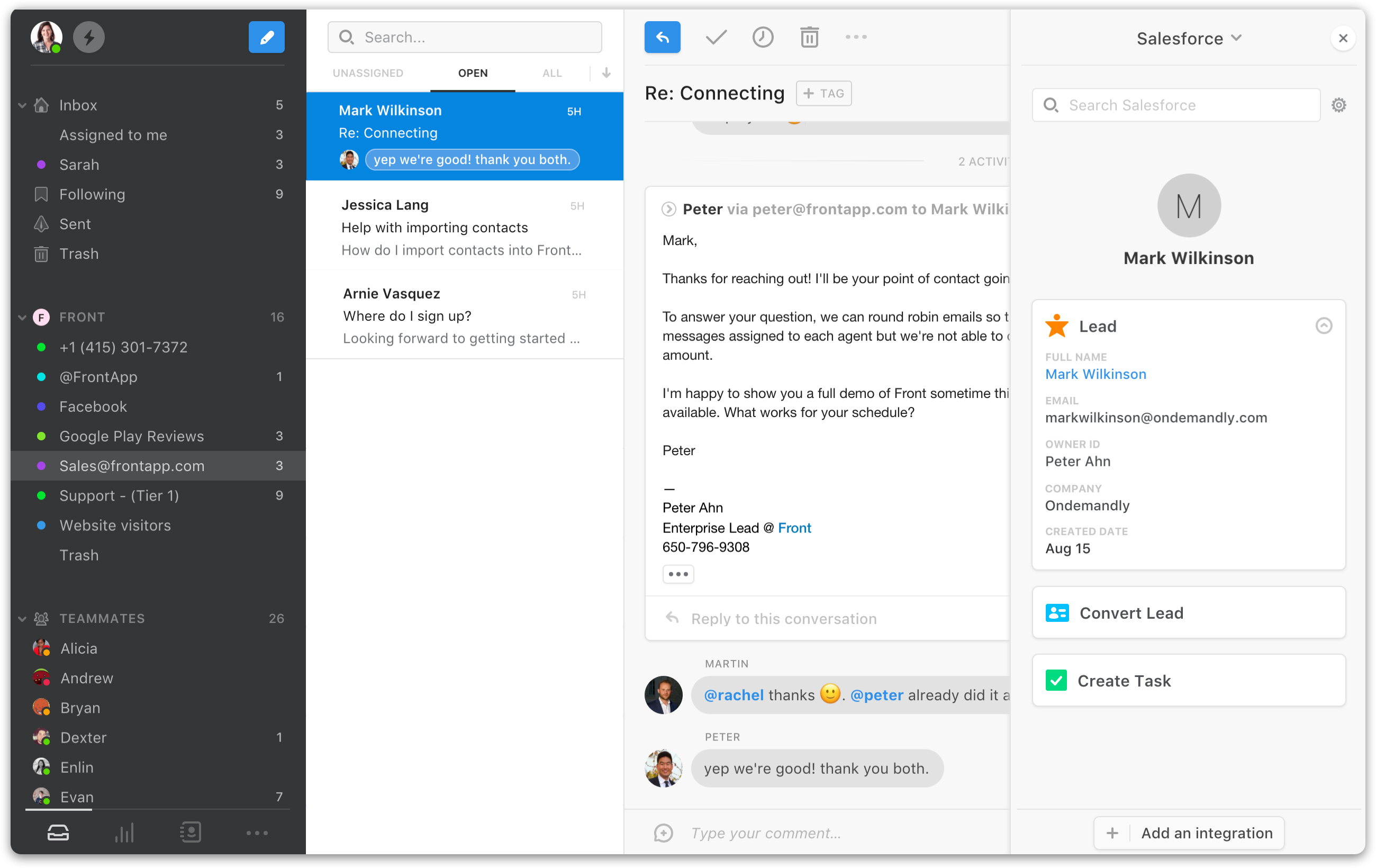Psst! This article has been updated. Check out the new version: Why Front is a better way to manage your email.
Email is a mess.
It’s confusing (ahem, forwarded threads), stressful (hello, post-vacation email pileup), and flat-out redundant (looking at you, reply-all).
The internet is flooded with theories of email’s impending doom: It’s burying our important information. It’s wasting our time. Endless notifications are ruining our attention spans. They all agree that work would be happier and more productive if we didn’t have to spend a third of our days sifting through it.
They’re right: email’s not cut out for the way we work today. But that doesn’t mean we’re better off without it.
Email is the communication tool used by businesses of all sizes, in every industry, in any location across the world. From sharing plans with teammates and scheduling sales demos, to sending invoices and providing customer support, we rely on it for almost everything we do at work.
Instead of attempting to kill email, why not just fix the tool we’re all so deeply dependent on, so it works the way we need it to?
Here’s how you can work smarter and happier: by managing your email in an intelligent, shared inbox.
1. Share the knowledge
First, email needs a little restructuring.
When Raymond Tomlinson invented email in 1971, he just wanted to send a few words to a teammate via his computer: a single message from one person to another.
Now we’re sending messages to anyone and everyone all at once, managing projects, scheduling events, and more. We rely on email to work with our team, yet email has remained private. While information is increasingly public by necessity, email hasn’t adapted to how we work today.
That’s where a shared inbox with Front comes in. Instead of juggling a group alias and forwarding messages to give teammates information, everyone can access the same emails in a single shared inbox. When one person replies, everyone sees it, and when one person archives it, it’s gone for everyone.
To keep your inbox simple, Front lets you manage your individual email privately, alongside your shared inbox, all in one place. With this new kind of inbox, your team sees only what they need to save time, but they can access anything they need to feel informed.

2. Tag and tidy it up
With endless messages and very limited attention spans, we need to bring order to our email to handle all the messages we receive today.
Gmail and Outlook have tried solving this with spam, folders, and labels like “important.” These depend on teammates to sort messages individually, though, so everyone has to spend time organizing messages, and everyone’s organization is different.
Front has custom teamtags, so your team stays organized as a whole and can find information you need faster. Make them stand out in your inbox with colors and emojis, or view tagged messages at once like folders. You can also create your own private tags for your personal workflow that won’t clutter your team’s list of tags.

Front also does some of the work for you with an intelligent rules engine. Using “if, then” statements, you can organize your messages based on trigger words, or route messages to certain people at specific times. With Front, your email knows where it should go, and what it should do on its own.
3. Chat it out
Whether you’re forwarding a message to your boss to ask a question, or shooting an FYI to your entire support team, you need to be able to discuss and share emails with teammates. That’s why many teams turn to chat apps like Slack and Hipchat to ask quick questions and discuss issues in real-time. This creates a few problems:
1. The conversation happens separately from the email, so when you look at it later on, you have no context on the situation.
2. When you go to find that context, you have to search through multiple apps to find it.
3. Chat messages can be distracting, and when they happen separately from the email itself, you have to message more to explain the email’s purpose.
Front brings the discussion to where it should be: with the original message. Loop teammates in on a conversation with an @mention, or get a second opinion on a reply by sharing a draft. With Front, you can get the context you need to work smarter, faster.

4. Bring it all together
From CRM and file storage to customer support and project management, new tools pop up every day. And with time, there will be more. If we’re going to work better, our inboxes will need to integrate with new tools, not shut them out.
Front saves you time by bringing all your other important communication tools in your inbox. Send an SMS text, reply to a Tweet, or comment on Facebook, all without switching tools. Without juggling multiple tools and tabs, you can respond faster, find resolutions, and keep customers happy.
Front puts all the information you need to answer emails at your fingertips. From customer data to pricing plans to past conversations, Front’s integrations pull in everything you need to know. You can even create tasks in Asana, update customer records in Salesforce, or manage issues in JIRA directly from Front — so you don’t have to switch tools or enter information twice to get work done.

Email is the original communication tool, and it’s the most widely-used workplace technology on the planet. But that doesn’t mean it’s perfect.
Instead of trying to kill email, let’s give it a little love – and fix it. Try Front free for 14 days.
Written by Emily Hackeling
Originally Published: 17 April 2020

